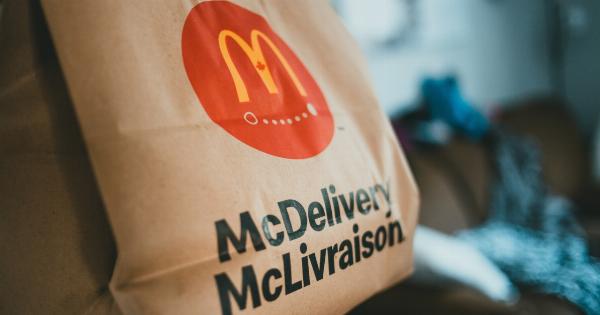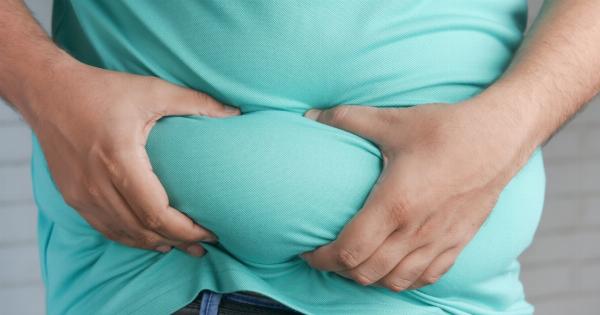Carbohydrates are an essential part of a healthy diet, providing us with energy to fuel our daily activities.
However, when consumed in excess, unused carbohydrates can be converted and stored as fat in the body, often resulting in the accumulation of stubborn belly fat.
The Science Behind Carb-to-Fat Conversion
To understand how carbohydrates can be converted into stubborn belly fat, it’s important to delve into the science behind this process.
When we consume carbohydrates, our body breaks them down into glucose, which is then absorbed into the bloodstream. This glucose serves as the primary source of energy for our cells.
Any excess glucose that is not immediately needed for energy is stored in the liver and muscles in the form of glycogen.
However, our glycogen storage capacity is limited, and once it reaches its limit, any surplus glucose is converted into fatty acids through a process called de novo lipogenesis (DNL).
This conversion primarily occurs in the liver, where the excess glucose is converted into triglycerides, a type of fat molecule.
These triglycerides are then transported to fat cells and stored as adipose tissue, commonly leading to the accumulation of stubborn belly fat.
Factors Influencing Belly Fat Accumulation
Several factors play a role in the conversion of carbohydrates to stubborn belly fat. Understanding these factors can help you make informed dietary choices to prevent or reduce the accumulation of belly fat.
1. Calorie Consumption
Consuming more calories than your body needs, regardless of the macronutrient breakdown, can lead to weight gain and the accumulation of belly fat.
It’s important to maintain a balanced calorie intake that aligns with your individual energy needs.
2. Carb Types and Glycemic Index
The type of carbohydrates you consume can impact how quickly and significantly your blood sugar levels rise.
High glycemic index (GI) foods, such as white bread or sugary drinks, cause a rapid spike in blood sugar levels, triggering a higher insulin response. This can promote fat storage and contribute to belly fat accumulation.
On the other hand, opting for low glycemic index foods, like whole grains, legumes, and vegetables, can help regulate blood sugar levels and minimize fat storage.
3. Physical Activity and Exercise
Regular physical activity and exercise play a crucial role in preventing belly fat accumulation.
Engaging in aerobic exercises, strength training, and high-intensity interval training (HIIT) can help burn excess calories and boost metabolic rate, making it easier to maintain a healthy weight and reduce belly fat.
4. Sleep and Stress Management
Sleep deprivation and chronic stress can disrupt hormonal balance, leading to an increased appetite and a greater tendency to consume excess carbohydrates.
Ensuring sufficient sleep and employing stress management techniques, such as meditation or yoga, may help control cravings and prevent overeating.
5. Balanced Macronutrient Intake
While excessive carbohydrate consumption can contribute to belly fat gain, a well-balanced diet that includes adequate protein, healthy fats, and fiber is essential for overall health.
Protein is particularly important, as it aids in muscle preservation and promotes a feeling of fullness, reducing the likelihood of overeating.
Preventing and Reducing Belly Fat
Now that we understand the factors that contribute to the conversion of carbs into stubborn belly fat, let’s explore some effective strategies to prevent or reduce belly fat:.
1. Portion Control and Moderation
Controlling portion sizes and practicing moderation in your carbohydrate consumption can help prevent excess calories that could be stored as belly fat.
Opt for whole grain options, which provide more fiber and nutrients, and aim to incorporate a variety of food groups in your meals.
2. Prioritize Fiber-Rich Foods
Fiber-rich foods, such as fruits, vegetables, whole grains, and legumes, not only provide essential nutrients but also help regulate blood sugar levels and promote satiety. Including fiber in your meals can help control appetite and prevent overeating.
3. Choose Complex Carbohydrates
Complex carbohydrates, such as quinoa, brown rice, and whole wheat pasta, are digested more slowly than refined carbohydrates.
This slower digestion prevents rapid spikes in blood sugar levels and helps maintain steady energy levels, reducing the likelihood of excess glucose being converted into fat.
4. Incorporate Regular Physical Activity
Engaging in regular exercise, such as cardio workouts, strength training, or activities like swimming or cycling, can help burn calories and reduce overall body fat percentage.
Aim for at least 150 minutes of moderate-intensity exercise or 75 minutes of vigorous exercise per week.
5. Manage Stress Levels
Chronic stress triggers the release of cortisol, a stress hormone that can lead to increased appetite and the accumulation of belly fat.
Implement stress management techniques like deep breathing, meditation, or engaging in hobbies to reduce stress levels and promote a healthier lifestyle.
Conclusion
Consuming excess carbohydrates, particularly refined ones with a high glycemic index, can lead to the conversion of carbs into stubborn belly fat.
By understanding the factors that contribute to belly fat accumulation and implementing effective strategies such as portion control, balanced macronutrient intake, regular physical activity, and stress management, you can prevent or reduce stubborn belly fat and achieve a healthier body composition.

















